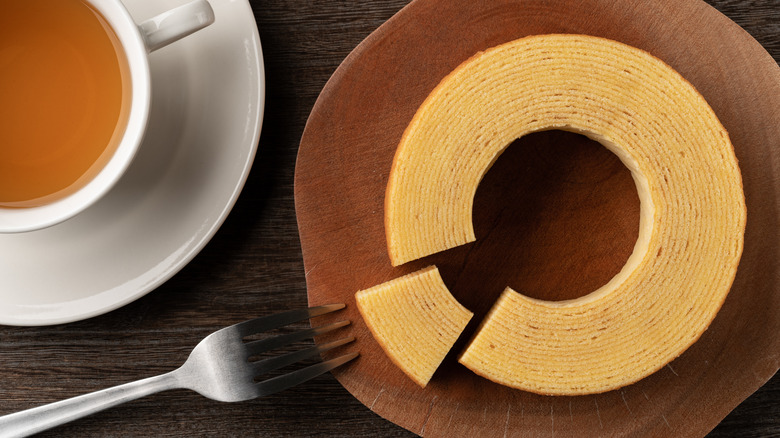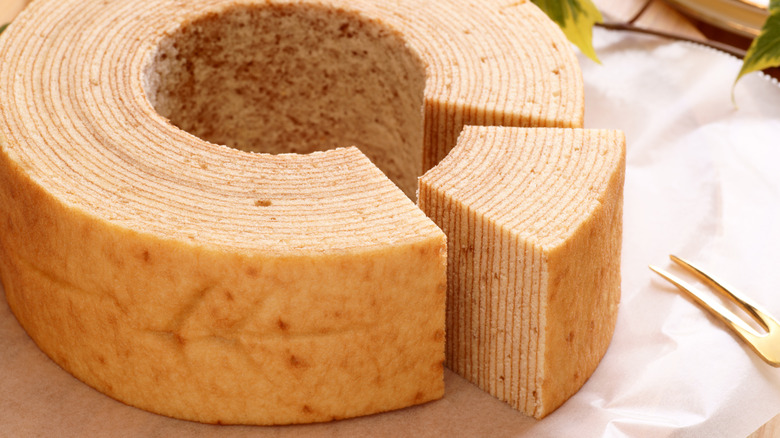What Is Baumkuchen And How Do You Eat It?
The traditional style of making baumkuchen — German for "tree cake" — requires serious patience to master. Whether the name refers to the stick the cake is baked onto or the appearance of rings that resemble the layers of a cut tree trunk, baumkuchen is a treat worthy of celebration. It is no wonder this labyrinthine cake is frequently found during festive seasons and celebratory occasions.
The intricacies of painting a rotating stick with layers of sponge cake have earned this recipe the title of "King of Cakes" for good reason. Bakers are forced to focus for hours at a time to make these layers, as the consistency and texture of the cake must be controlled so the cake remains light enough to not break off in the oven or over a fire.
Up to 20 thin, spongy layers can be served in full circular pieces or partial shapes of an arc, and the recipe is temptingly chewy and perfect to enjoy alongside hot cups of coffee or tea or a flute of champagne — perfect for holidays and celebrations. Flavor variations can be found with layers of chocolate, marzipan, or anise inserted into the center of the cake and the dish can be enhanced with fruit, nuts, matcha, honey, and seasonal ingredients like pumpkin. Whether presented in a full ring or piece of an arc, this fluffy layered cake gives way easily to the piercing of a fork and can be enjoyed as a dessert or a stand-alone treat.
The evolution of a delicacy
Though Greeks and Romans cooked bread on spits over fire, other Europeans took the process to a new level. German bakers have receipts dating back to the 15th century of baumkuchen recipes, and in the 17th century, the dough to make baumkuchen wasn't simply wrapped around sticks to cook but dripped in layers over a rotating center. Though some bakeries have chosen to maintain this traditional cake-making process, others have adopted automated ovens that can crank out as many as 90 baumkuchen cakes at once.
In Japan, baumkuchen is considered the ultimate wedding cake, and an annual exhibition honors the craftsmanship involved in slicing these baked rings off fiery spits. The cake's popularity in Asia is due in part to a war survivor. During World War I, a baker named Karl Juchheim was captured in German-controlled China and taken to an island off the Japanese coast where prisoners were asked to arrange an exhibition. Juchheim showcased his baumkuchen. Upon release, he opened a baumkuchen bakery in Yokohama. In time, the intricate sponge cake became a symbol of prosperity and good fortune, took off among those wanting to celebrate life, and to this day, can be found in establishments ranging from commuter stations to high-end eateries. Though baumkuchen can be eaten once cooled, the flavors of the cake tend to crescendo after a day — if you can refrain from digging in.

